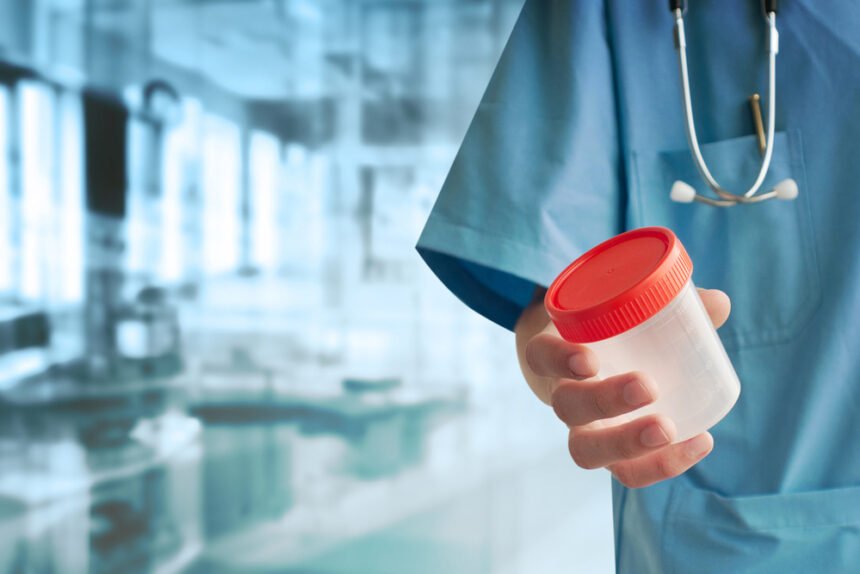In the highly precise realm of medical testing, every component’s integrity is crucial, and this is especially true for specimen cups. Though often overlooked, the quality of specimen cups plays a pivotal role in ensuring the accuracy of test results, which in turn affects diagnoses and treatment plans. This article explores the multifaceted aspects of specimen cup quality, from material composition to regulatory standards and innovative designs, and their impact on test accuracy. This exploration is particularly relevant for pharmacists and laboratory professionals, who rely on these tools daily.
1. Material and Composition of Specimen Cups
Specimen cups are primarily made from plastic. Plastic cups, valued for their affordability and durability, must be carefully produced by using specific plastic raw materials (polymers) selected for their chemical composition to avoid sample contamination. Usually, specimen cups would be produced from PP – PolyPropylene. The cover (cap) of the specimen cups would usually be produced of HDPE which stands for High Density Polyethylene. The HDPE is a softer than the PP, thus enabling a smooth interface of the flexible HDPE cap and the more rigid PP cup. This is one of the many things that need to be taken into consideration when you are trying to get accurate lab results.
The design features of a quality specimen cup, such as those offered by Mini-Plast Specimen Cups, including secure lids and transparency, are crucial for maintaining sample integrity and facilitating visual inspections.
2. Standardization and Regulation of Specimen Cups
The manufacturing of specimen cups is governed by stringent standards and regulations worldwide. These guidelines, set by bodies like the U.S. Food and Drug Administration (FDA), ensure that specimen cups are non-toxic and do not alter the sample’s composition. They cover sterility, labeling, and capacity, among other aspects. In some cases, it is necessary that each set of cup & cover, would be packed in a plastic pouch, to ensure that the set was not opened before it reached the end user. Compliance with these regulations is essential for laboratories and pharmacies to maintain the reliability of test results.
3. Innovations in Specimen Cup Design
Recent advancements in specimen cup design have focused on enhancing functionality and safety. Innovations include leak-proof caps, tamper-evident seals, built-in measurement indicators, and color-coded lids. These features not only preserve sample integrity but also simplify handling and processing in laboratory environments.
One of the major advancements in specimen cups is the set of a cup and a cap where the cap has 2 ports. One port has a built in needle for punching a vacuum tube to suck the urine into the vacuum tube. A second port, enable a free access to the sample that is in the cup, without unscrewing the cover from the cup. For more information visit Miniplast, one of the world leadering producers of Specimen Cups.
4. The Role of Specimen Cup Handling and Storage
Proper handling and storage of specimen cups are critical for preserving sample integrity. Factors such as temperature, light exposure, and time between collection and testing can significantly influence test results. Inappropriate practices can lead to sample degradation or contamination, emphasizing the importance of strict handling protocols.
5. Comparative Analysis of Specimen Cup Brands
Different brands of specimen cups offer varying features and qualities. For example, some specialize in urine sample cups with specific design elements for stability and visibility, while others focus on eco-friendly materials or labeling ease. Professionals must assess these differences to select the most suitable cups for their testing needs.
6. Case Studies: Impact of Poor Quality Specimen Cups
Real-life case studies illustrate the consequences of using low-quality specimen cups. Instances where poor-quality cups have led to inaccurate test results highlight the potential risks in patient care and diagnosis. These cases underscore the necessity of high-quality specimen cups in medical testing. Specimen cups must be produced under clean room conditions, and where necessary, they should be sterile – to ensure a reliable test result. Miniplast offer both sterile specimen cups as well as cups produced under clean room conditions.
7. User Perspectives on Specimen Cup Quality
Feedback from healthcare professionals and laboratory technicians emphasizes the importance of specimen cup quality in their work. Their insights on features like ease of use, reliability, and sample preservation offer valuable perspectives in evaluating cup quality.
Final words
This comprehensive analysis underscores the critical importance of high-quality specimen cups in achieving accurate test results. For pharmacists and laboratory technicians, understanding the nuances of specimen cup quality—from material and design to handling and brand differences—is essential. Adherence to standards, coupled with informed choices, can significantly impact the reliability of medical testing.
Additional Resources

